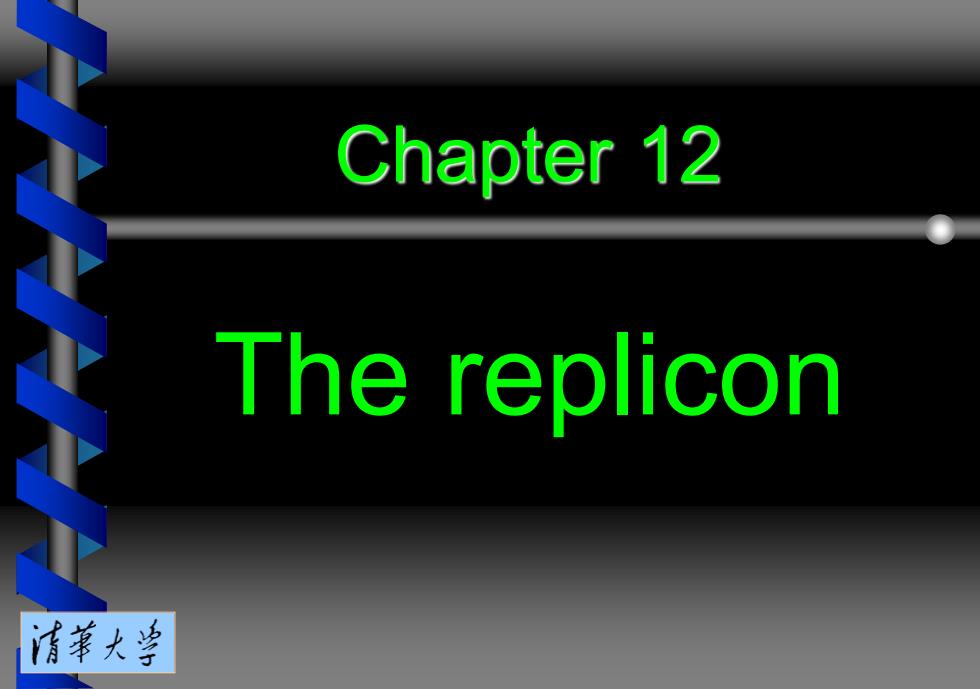
Chapter 12 The replicon 清革大当
Chapter 12 The replicon
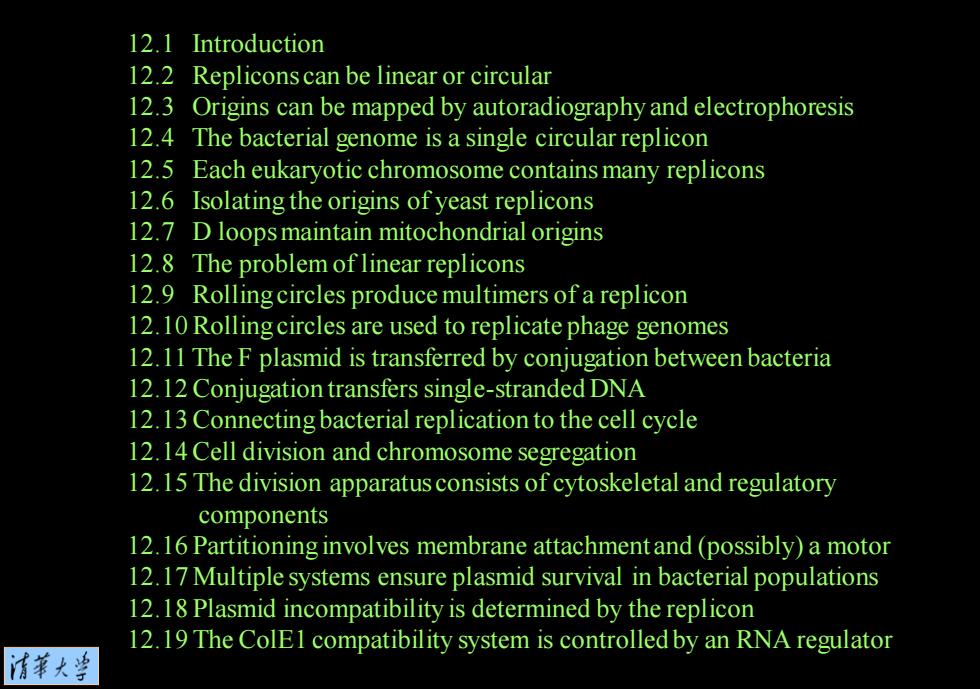
12.1 Introduction 12.2 Replicons can be linear or circular 12.3 Origins can be mapped by autoradiography and electrophoresis 12.4 The bacterial genome is a single circular replicon 12.5 Each eukaryotic chromosome contains many replicons 12.6 Isolating the origins of yeast replicons 12.7 D loopsmaintain mitochondrial origins 12.8 The problem oflinear replicons 12.9 Rolling circles produce multimers of a replicon 12.10 Rolling circles are used to replicate phage genomes 12.11 The F plasmid is transferred by conjugation between bacteria 12.12 Conjugation transfers single-stranded DNA 12.13 Connecting bacterial replication to the cell cycle 12.14 Cell division and chromosome segregation 12.15 The division apparatus consists of cytoskeletal and regulatory components 12.16 Partitioning involves membrane attachment and(possibly)a motor 12.17 Multiple systems ensure plasmid survival in bacterial populations 12.18 Plasmid incompatibility is determined by the replicon 12.19 The ColEl compatibility system is controlled by an RNA regulator 清菜大当
12.1 Introduction 12.2 Replicons can be linear or circular 12.3 Origins can be mapped by autoradiography and electrophoresis 12.4 The bacterial genome is a single circular replicon 12.5 Each eukaryotic chromosome contains many replicons 12.6 Isolating the origins of yeast replicons 12.7 D loops maintain mitochondrial origins 12.8 The problem of linear replicons 12.9 Rolling circles produce multimers of a replicon 12.10 Rolling circles are used to replicate phage genomes 12.11 The F plasmid is transferred by conjugation between bacteria 12.12 Conjugation transfers single-stranded DNA 12.13 Connecting bacterial replication to the cell cycle 12.14 Cell division and chromosome segregation 12.15 The division apparatus consists of cytoskeletal and regulatory components 12.16 Partitioning involves membrane attachment and (possibly) a motor 12.17 Multiple systems ensure plasmid survival in bacterial populations 12.18 Plasmid incompatibility is determined by the replicon 12.19 The ColE1 compatibility system is controlled by an RNA regulator
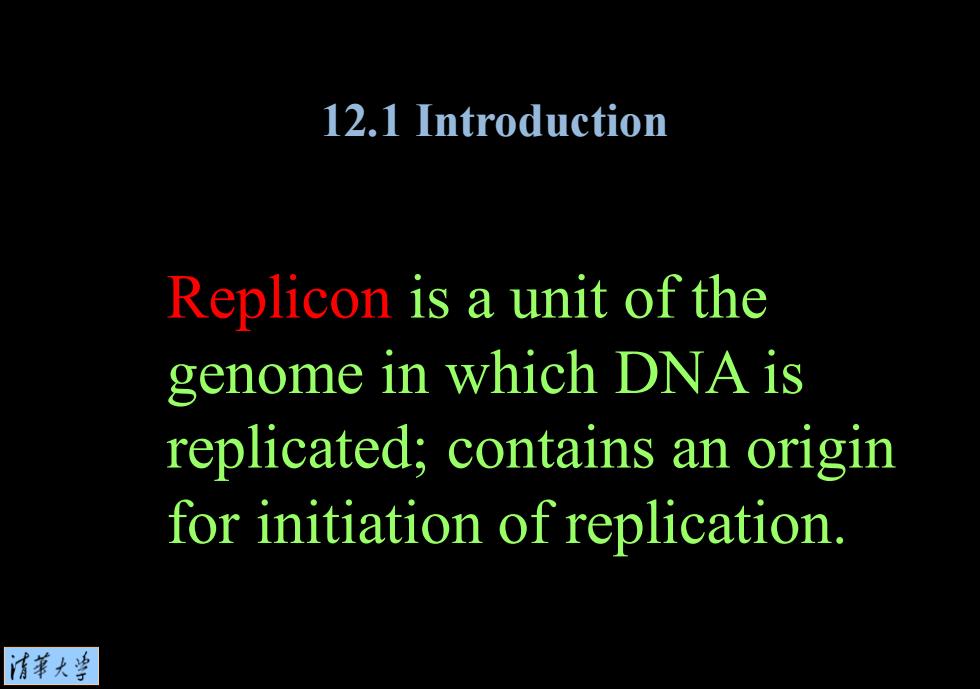
12.1 Introduction Replicon is a unit of the genome in which DNA is replicated;contains an origin for initiation of replication. 清苇大兰
Replicon is a unit of the genome in which DNA is replicated; contains an origin for initiation of replication. 12.1 Introduction
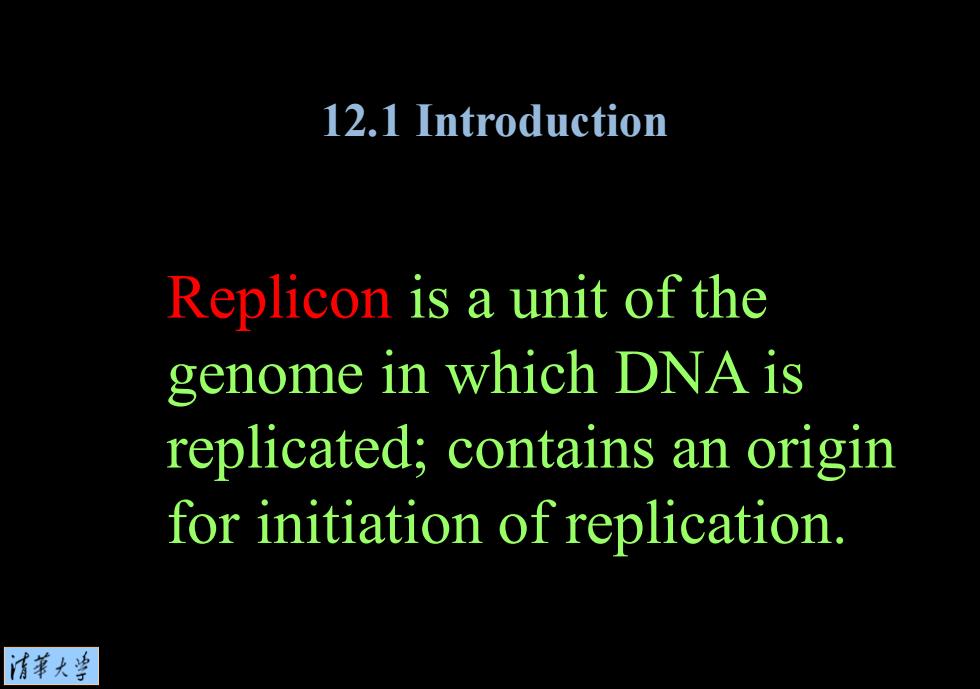
12.1 Introduction Replicon is a unit of the genome in which DNA is replicated;contains an origin for initiation of replication 情華大当
Replicon is a unit of the genome in which DNA is replicated; contains an origin for initiation of replication. 12.1 Introduction
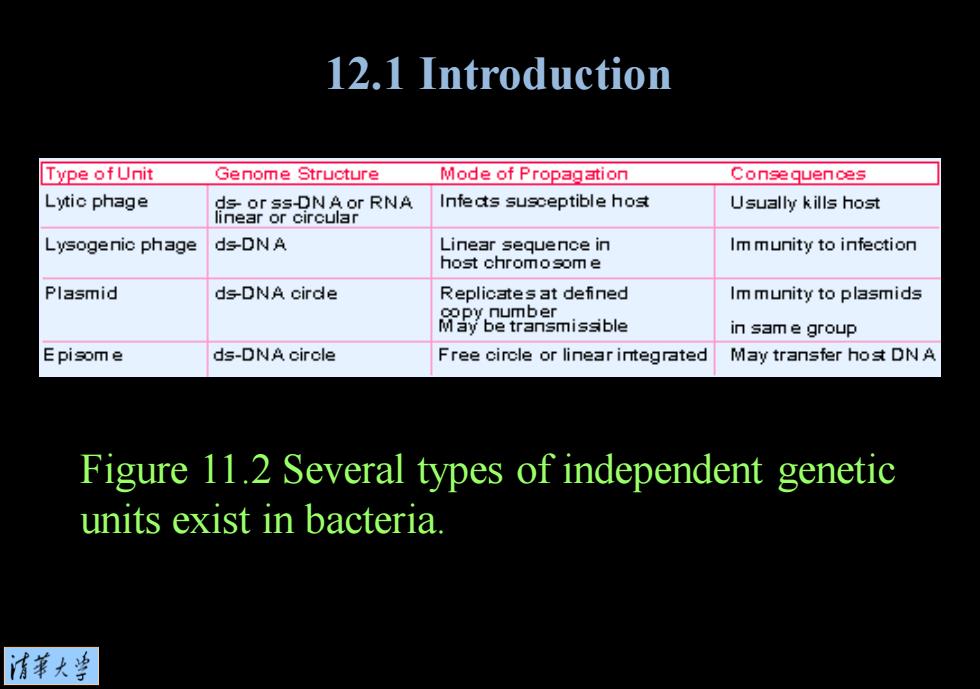
12.1 Introduction Type ofUnit Genome Structure Mode of Propagation Consequences Lytic phage ds-or ss-DN A or RNA Infeats susceptible host Usually kills host linear or circular Lysogenic phage ds-DNA Linear sequence in Im munity to infection ho寸chrom0some Plasmid ds-DNA cirde Replicates at defined Im munity to plasmids Mabe tarsmissble in same group Episome ds-DNA circle Free circle or linear integrated May transfer host DNA Figure 11.2 Several types of independent genetic units exist in bacteria. 清苇大当
Figure 11.2 Several types of independent genetic units exist in bacteria. 12.1 Introduction